Bad weather on the 'moon' puts the HI-SEAS crew into 'low power mode' — Commander's report: lunar day 6

Dr. Michaela Musilova is the director of Hawaii Space Exploration Analog and Simulation (HI-SEAS) program, which conducts analog missions to the moon and Mars for scientific research at a habitat on the volcano Mauna Loa. Currently, she is in command of the two-week Selene V lunar mission and contributed this report to Space.com's Expert Voices: Op-Ed & Insights.
Commander's report for the Selene V moon mission at HI-SEAS
Lunar day 6 (April 5, 2021)
The joke's on us, again. This time I was not behind this cruel prank. As our Crew Operations Officer Dr. Lindsey Kishline wrote in her mission report today: "The whole crew awoke very early today and ran downstairs in the habitat all giddy with glee like children on Christmas morning at the possibility of a finally going on a moonwalk." I'll paraphrase the rest, as some stronger language was used. Instead of being greeted with a nice sunrise like we hoped, "dust storms" were already raging outside. They are the lunar equivalent to the rainstorms and fog that we have been experiencing on our analog missions at HI-SEAS, on the volcano Mauna Loa in Hawaii.
We woke up several hours earlier than normal to avoid the "dust storms" that usually engulf the habitat by noon. Our efforts to bypass the dust storms and finally perform our first extravehicular activity (EVA), also known as a moonwalk, were in vain. The plague of the "dust storms" at HI-SEAS continues. They have been complicating the lives of most HI-SEAS crews since October 2020. While I understand the crew's frustration with being stuck indoors for days on end and not being able to do their research outside, I do appreciate the extra challenge that these conditions pose to the crew.
Related: HI-SEAS crew struggle to keep up hope as relentless storms foil their 'moonwalks'
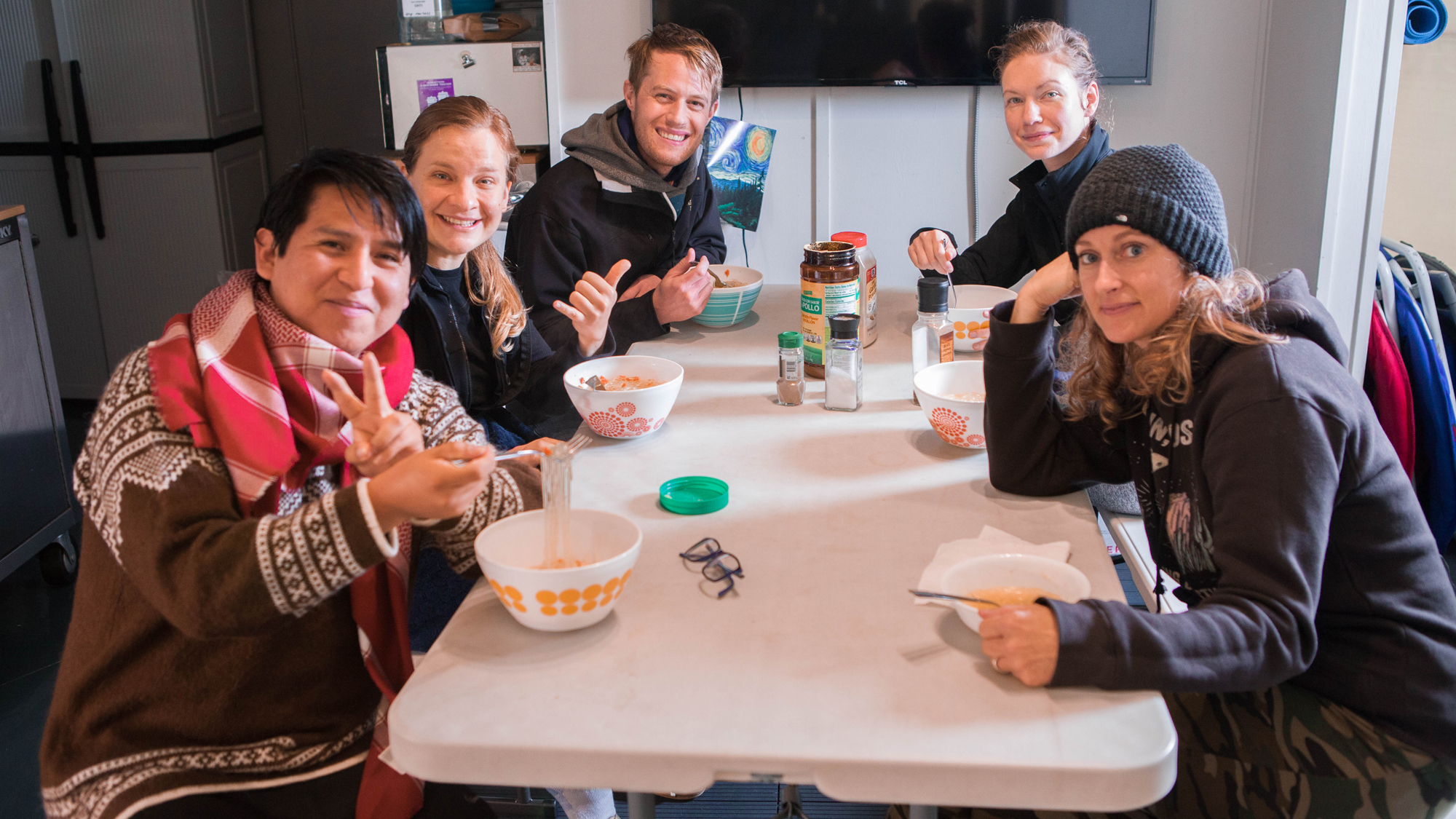
One of the main reasons we perform these analog missions is to test and train people on how to work as a team to resolve problems, with limited resources, during space missions. If the dust storms didn't stress the crew out, then I would have created some artificial problems to test them (just like I did on day 2 with my April Fools' joke). As the director of HI-SEAS, I'm able to have my team in Mission Control on "Earth" remotely disable various systems in the habitat, such as the power and our virtual connection to Earth. I can also create artificial problems with our water supply and our different technologies at HI-SEAS.
Get the Space.com Newsletter
Breaking space news, the latest updates on rocket launches, skywatching events and more!
Nonetheless, the crew is also here on mission to perform their individual research projects. This is why being forced to be indoors because of "dust storms" is particularly challenging for Space Resources Officer Gustavo Jamanca-Lino. Most of his research involves collecting lava rock samples and taking geological measurements during EVAs.
Gustavo thus spent the last few days reviewing technical documents to support his research, such as the characterization of lunar rocks with information from NASA's robotic Surveyor 5 mission (which landed on the moon in 1967) and the Apollo 11 moon landing. He was particularly interested in the particle distribution of the lunar regolith (similar to soil on Earth), which is information that he'll use for collecting lunar analog samples on the volcano Mauna Loa.
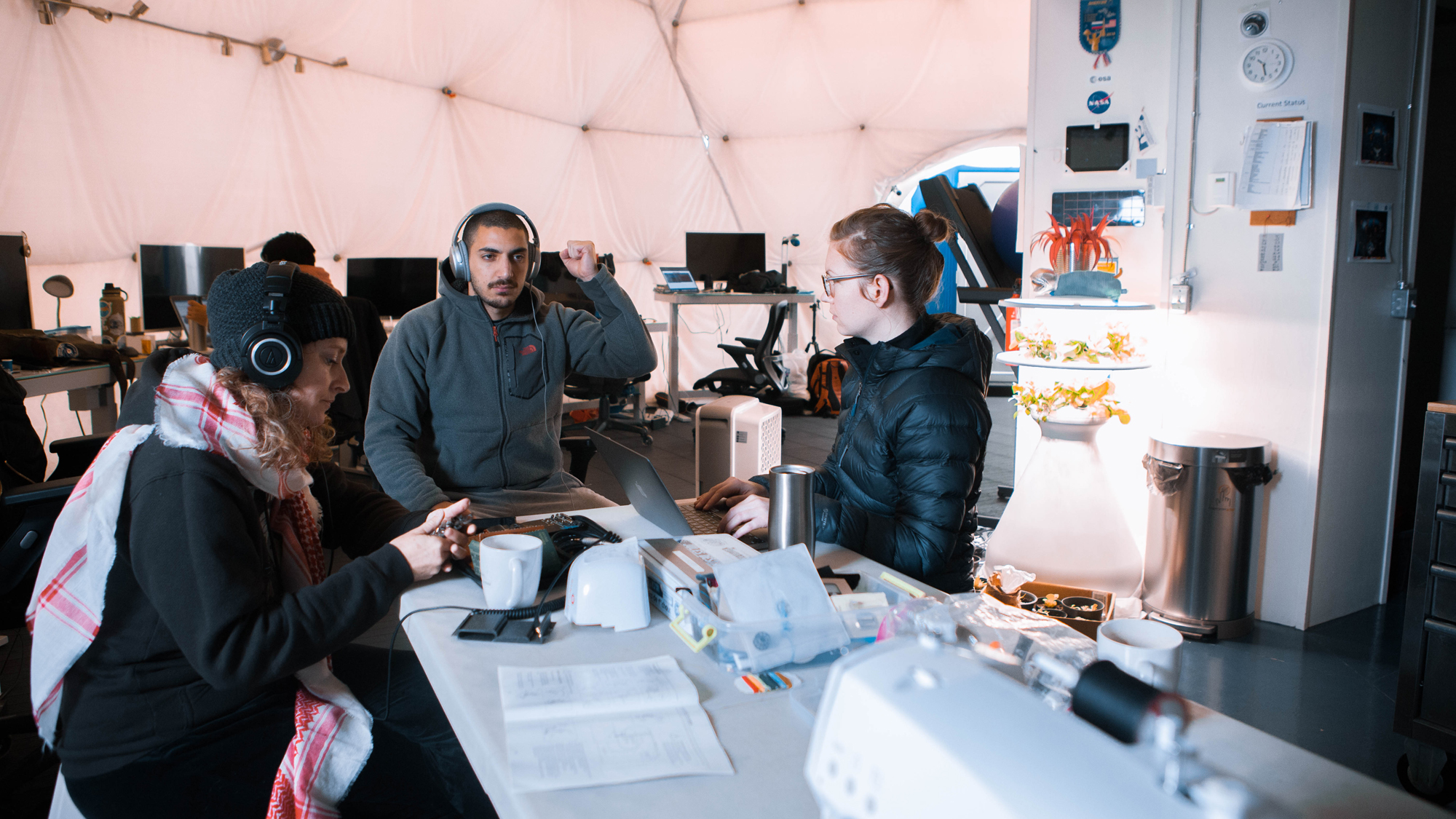
The rest of the crew has fortunately not been affected by the weather, except when we went into so-called "low power mode." That is when we can't fully recharge the habitat's batteries through our solar panels during "dust storms' and we have to conserve power instead. To do that, we have to turn off all appliances, chargers and even experiments that are not vital to our survival on the moon. This includes turning the temperature in the habitat down by a few degrees, which the crew does not enjoy. There now exist multiple memes of me along the lines of someone looking frozen with the caption: "Lord Commander be like 'it's not cold in here.'"
When we finally had enough power, my crewmembers were able to assemble a 3D printer that was kindly donated to HI-SEAS by a former crewmember. It was a successful team effort that included help from several members of our volunteer Mission Support team.
Crew Biologist Dr. Brandy Nunez is taking care of the 3D printer for the Selene V mission, on top of her other projects. They include audio recordings of sounds typical of a lunar analog mission inside the habitat and during EVAs. Brandy is also currently growing seedlings in the lab, some of which involve recycling different habitat materials for use as fertilizers. One of these fertilizers is made from crewmembers' hair, as part of the nationwide Mission to Mars high school student competition that I have been running in Slovakia for the past few years.
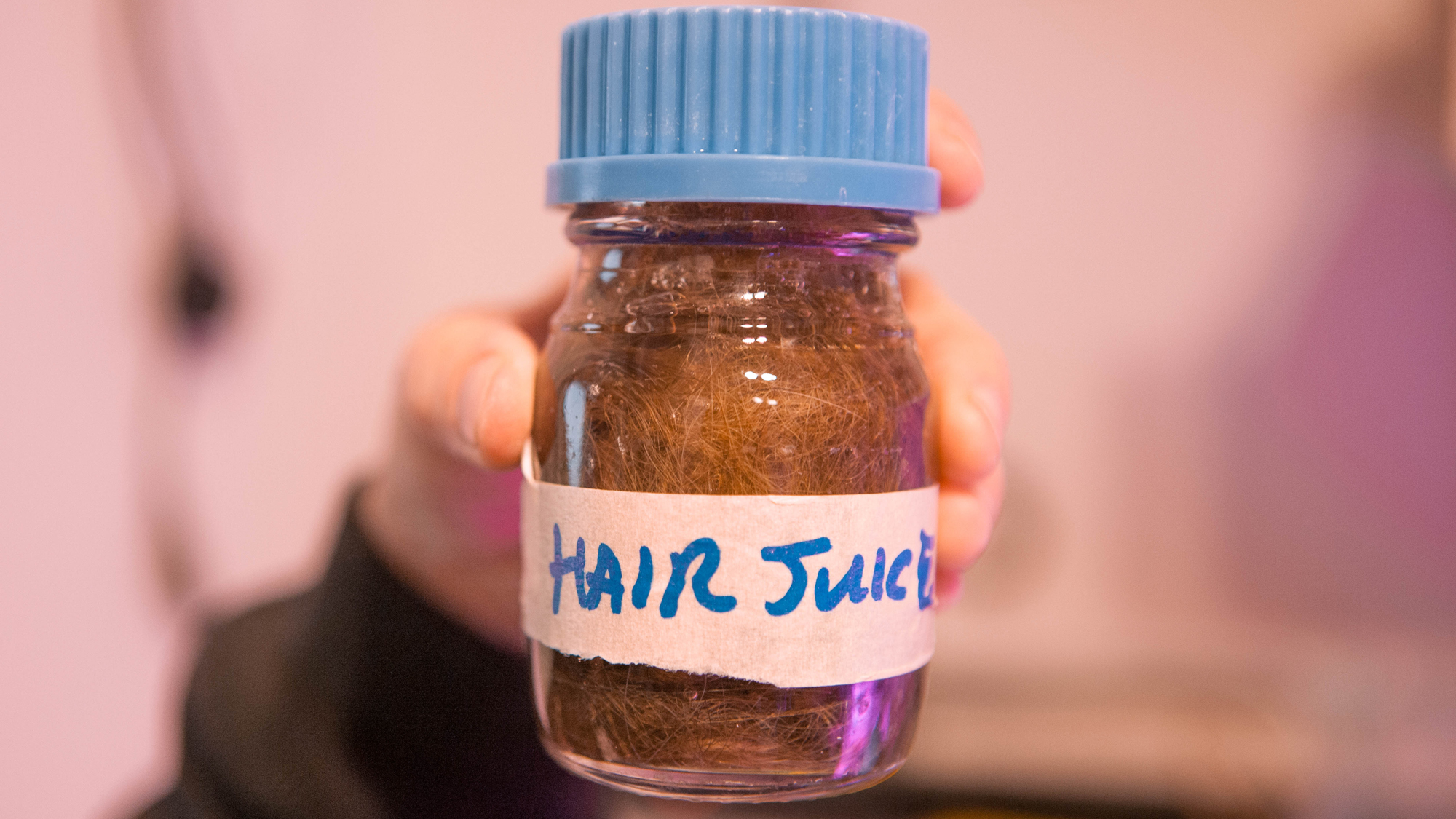
One of the first items that we 3D printed were ribs for Science Communications Officer Bader Al Moulah's research project, which involves training astronauts without medical degrees to perform life-saving surgeries after receiving a focused medical curriculum. He has three procedures planned for the mission and so far has performed the first procedure. It involved treating and suturing a large simulated laceration on a crewmember.
Bader 3D printed the ribs in an effort to better simulate his next procedure that will be focused on mitigating a case of tension pneumothorax. It is a life-threatening condition that develops when air leaks into the space between the lungs and chest wall.
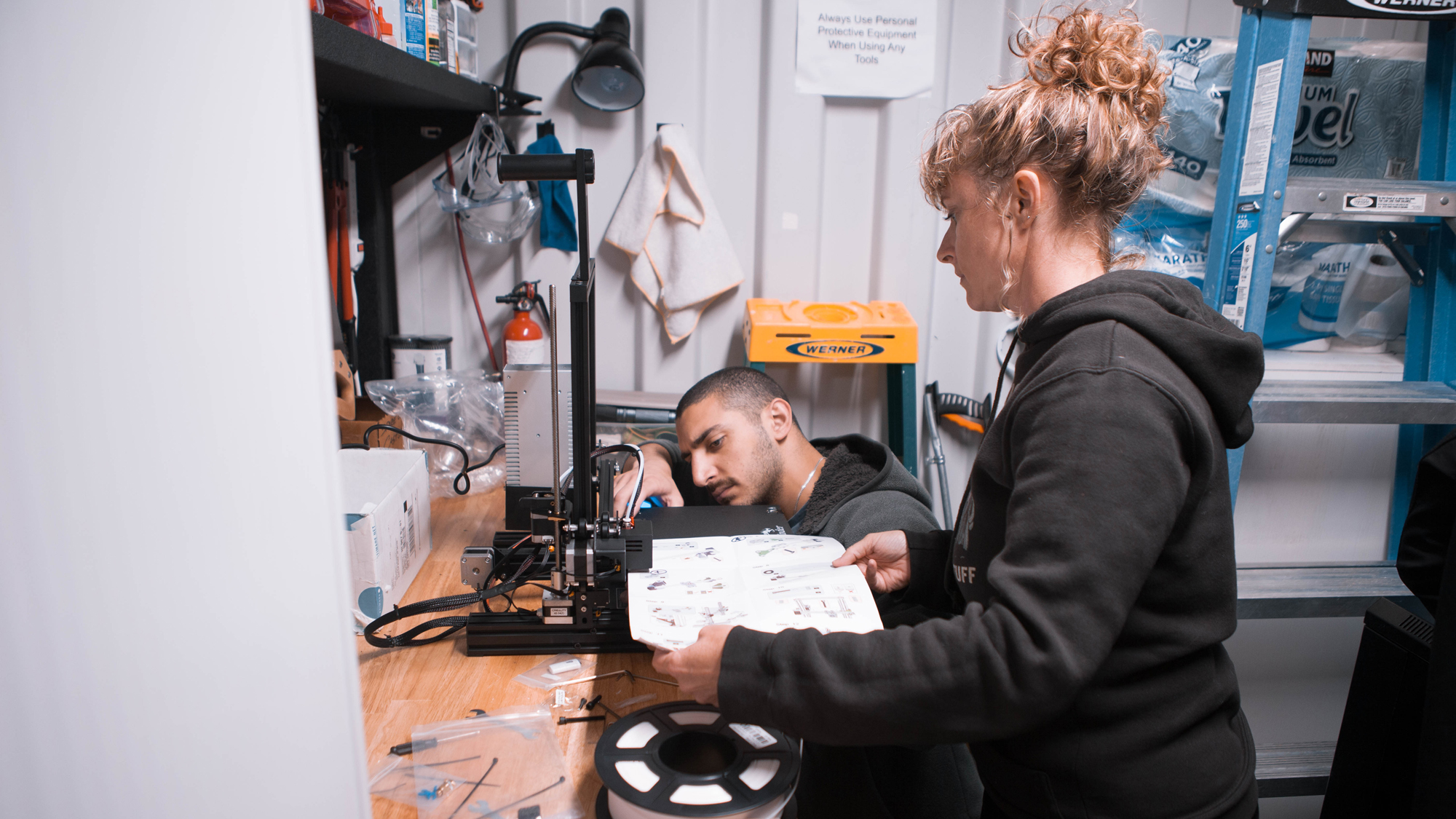
In the meantime, Lindsey has been able to finish coding the experimental audio and visual stimuli to be used in her perceptual EVA helmet experiment. She calculated field of view measurements for various planes of depth in the EVA helmets. To date, Lindsey has overcome several obstacles in designing perceptual research on the moon, including audio-visual latency with the available hardware and software, as well as the field of view being obscured due to some of the helmets' features. These include a heads-up display and a camera in the chin part of the helmet.
The HI-SEAS lab is now fully inhabited by multiple living organisms. Crew Engineer Sean Gellenbeck's mushroom and algae culture experiment is coexisting with all of Brandy's plant growth projects. The mushroom and algal cultures are sealed together in a small volume container. Sean is studying the gas exchange between the two cultures. The CO2 level in the container is currently elevated and he expects it to plateau, then decrease as the algal culture continues to grow and use the CO2 in the container.
Commander Musilova signing off hoping the "dust storms" will give the Selene V crew a break, especially as Gustavo can't wait to go on an EVA to collect samples for his research project. However, even if we'll end up confined indoors for longer, I'm confident the crew will continue to support one another with high spirits as they have been doing so far. Each day I deeply enjoy our time learning from one another and getting to know each other better.
Follow Michaela Musilova on Twitter @astro_Michaela. Follow us on Twitter @Spacedotcom and on Facebook.
Join our Space Forums to keep talking space on the latest missions, night sky and more! And if you have a news tip, correction or comment, let us know at: community@space.com.
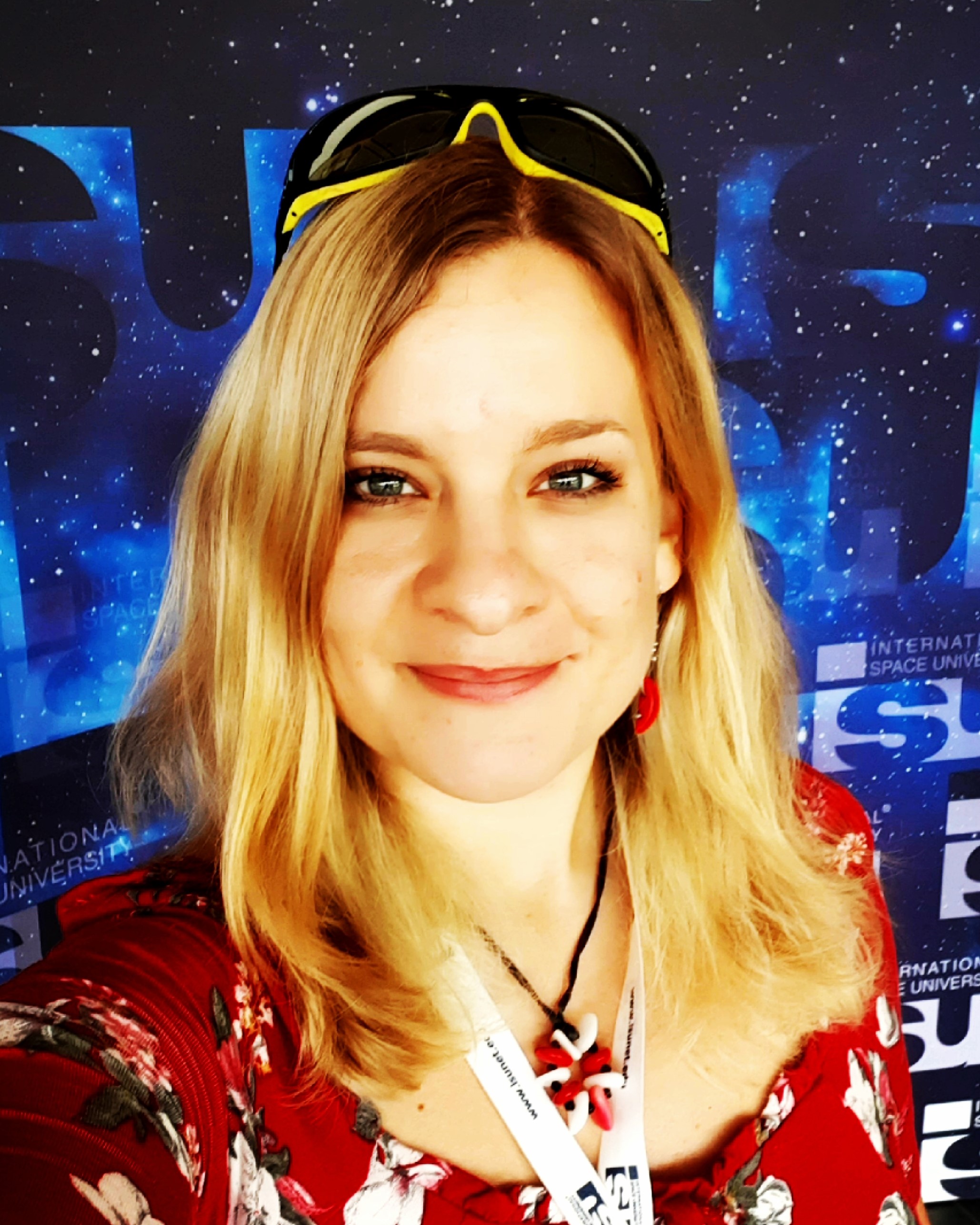
Dr. Michaela Musilova is an astrobiologist with a focus on life in extreme environments. She has a PhD degree from the University of Bristol and is a graduate from the International Space University's (ISU) Space Studies Program. Michaela's space research experience includes working at the NASA Jet Propulsion Laboratory, University of London Observatory, Canada-France-Hawaii Telescope, on NASA's and the U.K. Space Agency's MoonLite project, being an analogue astronaut and Commander of numerous simulated missions to the moon and Mars at the HI-SEAS station in Hawaii, and at the Mars Desert Research Station in Utah. Michaela is currently the Director of HI-SEAS, as part of the International MoonBase Alliance. She is also a visiting Professor at the Slovak University of Technology, Vice-Chair of the Slovak Organisation for Space Activities, Adjunct Faculty at ISU and the Senior Research Adviser for Mission Control Space Services Inc.
She has received numerous prizes and grants, including the Emerging Space Leaders Grant from the International Astronautical Federation (2016) and the Women in Aerospace – Europe Young Professional Award (2016), and she was selected as one of the most promising 30 under 30 by Forbes Slovakia (2015). Michaela is also actively involved in the Duke of Edinburgh's International Award, as a patron of the program in Slovakia and an Emerging Leader Representative for Europe, Mediterranean and Arab states. Furthermore, she enjoys participating in STEAM outreach activities from teaching at schools, giving public presentations, to working with the media and more, as well as encouraging people to pursue their dreams. For instance, she is an Advisory Board Member of the STEM Punks immersive programs for students and teachers.









